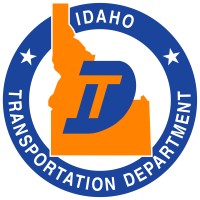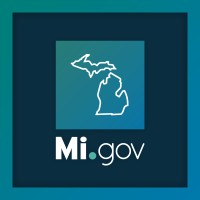
Idaho Transportation Department Company Cyber Security Posture
idaho.govThe state transportation system is inextricably woven into the fabric of Idaho life. The state's citizens use Idaho's transportation system to get to work, school, friends and recreation. They also rely on that system to bring goods to their stores, services to their doorstep, and to make sure the state's goods and services are delivered to the customers of the nation and the world. From the food they eat, to the letters they read, to the movies they drive to, Idahoans are empowered by transportation in complex and substantial ways. The Idaho Transportation Department (ITD) has many opportunities for work variety and specialization. There are many careers to pursue at ITD including Engineering, Finance and Accounting, Human Resources, and more. Working for ITD includes a competitive benefits package as well as an excellent work life balance with options such as flex time. Working with ITD can be a lifetime career choice with the opportunity for growth and advancement. Contact an ITD Recruiter at: [email protected] or call 208-334-8664 .
ITD Company Details
idaho-department-of-transportation
891 employees
4683.0
922
Government Administration
idaho.gov
Scan still pending
IDA_2289206
In-progress
Between 900 and 1000
This score is AI-generated and less favored by cyber insurers, who prefer the TPRM score.
 ITD Global Score
ITD Global Score.png)

Idaho Transportation Department Company Scoring based on AI Models
| Model Name | Date | Description | Current Score Difference | Score |
|---|---|---|---|---|
| AVERAGE-Industry | 03-12-2025 | This score represents the average cybersecurity rating of companies already scanned within the same industry. It provides a benchmark to compare an individual company's security posture against its industry peers. | N/A | Between 900 and 1000 |
Idaho Transportation Department Company Cyber Security News & History
| Entity | Type | Severity | Impact | Seen | Url ID | Details | View |
|---|---|---|---|---|---|---|---|
| Idaho Transportation Department | Data Leak | 85 | 4 | 02/2018 | IDA18158622 | Link | |
Rankiteo Explanation : Attack with significant impact with customers data leaksDescription: There was a hack of two email accounts at the Idaho Transportation Department (ITD). It potentially exposed the personal information of commercial truckers whose rigs are registered in Idaho, including Social Security and credit card numbers. One email account that was exposed contained an estimated 318 driver’s license numbers, 400 Social Security numbers, 999 credit card numbers, and 11 bank account numbers. ITD reported that a single individual’s personal information may be duplicated multiple times in those totals. | |||||||
Idaho Transportation Department Company Subsidiaries

The state transportation system is inextricably woven into the fabric of Idaho life. The state's citizens use Idaho's transportation system to get to work, school, friends and recreation. They also rely on that system to bring goods to their stores, services to their doorstep, and to make sure the state's goods and services are delivered to the customers of the nation and the world. From the food they eat, to the letters they read, to the movies they drive to, Idahoans are empowered by transportation in complex and substantial ways. The Idaho Transportation Department (ITD) has many opportunities for work variety and specialization. There are many careers to pursue at ITD including Engineering, Finance and Accounting, Human Resources, and more. Working for ITD includes a competitive benefits package as well as an excellent work life balance with options such as flex time. Working with ITD can be a lifetime career choice with the opportunity for growth and advancement. Contact an ITD Recruiter at: [email protected] or call 208-334-8664 .
Access Data Using Our API

Get company history
.png)
ITD Cyber Security News
ITD Unveils First-Ever Emergency Operations Plan
This EOP establishes how the department will respond to and recover from emergencies and disasters that impact ITD and the state's ...
TSA begins REAL ID full enforcement on May 7, 2025
On May 7, the Transportation Security Administration will no longer accept state-issued identifications that are not REAL ID compliant at security checkpoints.
Trucks being redirected to US-95 now that landslide repairs north of Council are complete
Beginning Sunday evening at 8 p.m., US-95 will be fully closed to all vehicle traffic due to the oversized drill rig crane taking up both lanes.
System Interchange project enters final year of construction
Originally built in the 1960s, the I-86 and I-15 System Interchange is undergoing a rebuild to improve safety and replace aging infrastructure.
ITD secures grant to build wildlife underpasses
The Idaho Transportation Department recently secured $20.8 million in grant funding to build three wildlife underpasses near Montpelier.
‘The Salt Seeing Eye:’ the snowplow driver’s crystal ball
Tablets equipped inside plow trucks show drivers video of where their wing is at, and relay salt and brine output numbers right on the screen.
Idaho Transportation Department shares winter driving tips to keep Idahoans safe on snowy roads
Drive cautiously: Slow down, increase stopping distance, and avoid driver assistance systems like cruise control, lane-keeping, and other auto- ...
Name a Snowplow
Name A Snowplow is a fun way to spread awareness about snowplow safety, foster a sense of ownership among the community, and teach future ...
TSA reminds public that REAL ID enforcement continues
“As we approach the busy summer travel season, we continue to remind travelers that REAL ID enforcement is the law of the land moving forward.

ITD Similar Companies

Gobierno de Cantabria
Regional Government of Cantabria Government of Autonomous Region of Cantabria situated in north coast of Spain. Population: aprox. 580.000 inhab. (2008) Surface: 5.221 squared km. Capital: Santander. The Regional Government has competences in Tax, Health, Social Care, Education, Industry, Energy,

Department of Education
The Department of Education is responsible for delivering the Victorian Government’s commitment to making Victoria the Education State, where all Victorians have the best learning and development experience, regardless of their background, postcode or circumstances. Education remains a cornerstone f

State of Oregon
Official LinkedIn page for the state of Oregon. Oregon is a state in the Pacific Northwest region of the United States. It is located on the Pacific coast, with Washington to the north, California to the south, Nevada on the southeast and Idaho to the east. The Columbia and Snake rivers delineate mu

State of Michigan
Every day the contributions and achievements of State of Michigan employees have a direct impact on over 10 million Michiganders across the state. If you're looking for a fulfilling career in state government that can make a real difference in the lives of others, you can find your place working wit

Department for Work and Pensions (DWP)
The Department for Work and Pensions (DWP) is the UK’s largest government department and is responsible for welfare, pensions and child maintenance policy. It administers the State Pension and a range of working age, disability and ill health benefits, serving around 20 million customers. DWP is re

MP Forest Department
Madhya Pradesh Forest Department is engaged in management of largest forest area in the country. Economy of about 95 lakh tribal is inextricably linked with forests. Nine National Parks and Twenty Five Wildlife Sanctuaries are attractive destinations on tourists. Forestry operations provide 300 lakh

Frequently Asked Questions (FAQ) on Cybersecurity Incidents
ITD CyberSecurity History Information
Total Incidents: According to Rankiteo, ITD has faced 1 incidents in the past.
Incident Types: The types of cybersecurity incidents that have occurred include ['Data Leak'].
Total Financial Loss: The total financial loss from these incidents is estimated to be {total_financial_loss}.
Cybersecurity Posture: The company's overall cybersecurity posture is described as The state transportation system is inextricably woven into the fabric of Idaho life. The state's citizens use Idaho's transportation system to get to work, school, friends and recreation. They also rely on that system to bring goods to their stores, services to their doorstep, and to make sure the state's goods and services are delivered to the customers of the nation and the world. From the food they eat, to the letters they read, to the movies they drive to, Idahoans are empowered by transportation in complex and substantial ways. The Idaho Transportation Department (ITD) has many opportunities for work variety and specialization. There are many careers to pursue at ITD including Engineering, Finance and Accounting, Human Resources, and more. Working for ITD includes a competitive benefits package as well as an excellent work life balance with options such as flex time. Working with ITD can be a lifetime career choice with the opportunity for growth and advancement. Contact an ITD Recruiter at: [email protected] or call 208-334-8664 ..
Detection and Response: The company detects and responds to cybersecurity incidents through {description_of_detection_and_response_process}.
Incident Details
Incident 1: Ransomware Attack
Title: {Incident_Title}
Description: {Brief_description_of_the_incident}
Date Detected: {Detection_Date}
Date Publicly Disclosed: {Disclosure_Date}
Date Resolved: {Resolution_Date}
Type: {Type_of_Attack}
Attack Vector: {Attack_Vector}
Vulnerability Exploited: {Vulnerability}
Threat Actor: {Threat_Actor}
Motivation: {Motivation}
Incident 2: Data Breach
Title: {Incident_Title}
Description: {Brief_description_of_the_incident}
Date Detected: {Detection_Date}
Date Publicly Disclosed: {Disclosure_Date}
Date Resolved: {Resolution_Date}
Type: {Type_of_Attack}
Attack Vector: {Attack_Vector}
Vulnerability Exploited: {Vulnerability}
Threat Actor: {Threat_Actor}
Motivation: {Motivation}
Common Attack Types: As of now, the company has not encountered any reported incidents involving common cyberattacks.
Identification of Attack Vectors: The company identifies the attack vectors used in incidents through {description_of_identification_process}.
Impact of the Incidents
Incident 1: Ransomware Attack
Financial Loss: {Financial_Loss}
Data Compromised: {Data_Compromised}
Systems Affected: {Systems_Affected}
Downtime: {Downtime}
Operational Impact: {Operational_Impact}
Conversion Rate Impact: {Conversion_Rate_Impact}
Revenue Loss: {Revenue_Loss}
Customer Complaints: {Customer_Complaints}
Brand Reputation Impact: {Brand_Reputation_Impact}
Legal Liabilities: {Legal_Liabilities}
Identity Theft Risk: {Identity_Theft_Risk}
Payment Information Risk: {Payment_Information_Risk}
Incident 2: Data Breach
Financial Loss: {Financial_Loss}
Data Compromised: {Data_Compromised}
Systems Affected: {Systems_Affected}
Downtime: {Downtime}
Operational Impact: {Operational_Impact}
Conversion Rate Impact: {Conversion_Rate_Impact}
Revenue Loss: {Revenue_Loss}
Customer Complaints: {Customer_Complaints}
Brand Reputation Impact: {Brand_Reputation_Impact}
Legal Liabilities: {Legal_Liabilities}
Identity Theft Risk: {Identity_Theft_Risk}
Payment Information Risk: {Payment_Information_Risk}
Average Financial Loss: The average financial loss per incident is {average_financial_loss}.
Commonly Compromised Data Types: The types of data most commonly compromised in incidents are {list_of_commonly_compromised_data_types}.
Incident 1: Ransomware Attack
Entity Name: {Entity_Name}
Entity Type: {Entity_Type}
Industry: {Industry}
Location: {Location}
Size: {Size}
Customers Affected: {Customers_Affected}
Incident 2: Data Breach
Entity Name: {Entity_Name}
Entity Type: {Entity_Type}
Industry: {Industry}
Location: {Location}
Size: {Size}
Customers Affected: {Customers_Affected}
Response to the Incidents
Incident 1: Ransomware Attack
Incident Response Plan Activated: {Yes/No}
Third Party Assistance: {Yes/No}
Law Enforcement Notified: {Yes/No}
Containment Measures: {Containment_Measures}
Remediation Measures: {Remediation_Measures}
Recovery Measures: {Recovery_Measures}
Communication Strategy: {Communication_Strategy}
Adaptive Behavioral WAF: {Adaptive_Behavioral_WAF}
On-Demand Scrubbing Services: {On_Demand_Scrubbing_Services}
Network Segmentation: {Network_Segmentation}
Enhanced Monitoring: {Enhanced_Monitoring}
Incident 2: Data Breach
Incident Response Plan Activated: {Yes/No}
Third Party Assistance: {Yes/No}
Law Enforcement Notified: {Yes/No}
Containment Measures: {Containment_Measures}
Remediation Measures: {Remediation_Measures}
Recovery Measures: {Recovery_Measures}
Communication Strategy: {Communication_Strategy}
Adaptive Behavioral WAF: {Adaptive_Behavioral_WAF}
On-Demand Scrubbing Services: {On_Demand_Scrubbing_Services}
Network Segmentation: {Network_Segmentation}
Enhanced Monitoring: {Enhanced_Monitoring}
Incident Response Plan: The company's incident response plan is described as {description_of_incident_response_plan}.
Third-Party Assistance: The company involves third-party assistance in incident response through {description_of_third_party_involvement}.
Data Breach Information
Incident 2: Data Breach
Type of Data Compromised: {Type_of_Data}
Number of Records Exposed: {Number_of_Records}
Sensitivity of Data: {Sensitivity_of_Data}
Data Exfiltration: {Yes/No}
Data Encryption: {Yes/No}
File Types Exposed: {File_Types}
Personally Identifiable Information: {Yes/No}
Prevention of Data Exfiltration: The company takes the following measures to prevent data exfiltration: {description_of_prevention_measures}.
Handling of PII Incidents: The company handles incidents involving personally identifiable information (PII) through {description_of_handling_process}.
Ransomware Information
Incident 1: Ransomware Attack
Ransom Demanded: {Ransom_Amount}
Ransom Paid: {Ransom_Paid}
Ransomware Strain: {Ransomware_Strain}
Data Encryption: {Yes/No}
Data Exfiltration: {Yes/No}
Ransom Payment Policy: The company's policy on paying ransoms in ransomware incidents is described as {description_of_ransom_payment_policy}.
Data Recovery from Ransomware: The company recovers data encrypted by ransomware through {description_of_data_recovery_process}.
Regulatory Compliance
Incident 1: Ransomware Attack
Regulations Violated: {Regulations_Violated}
Fines Imposed: {Fines_Imposed}
Legal Actions: {Legal_Actions}
Regulatory Notifications: {Regulatory_Notifications}
Incident 2: Data Breach
Regulations Violated: {Regulations_Violated}
Fines Imposed: {Fines_Imposed}
Legal Actions: {Legal_Actions}
Regulatory Notifications: {Regulatory_Notifications}
Regulatory Frameworks: The company complies with the following regulatory frameworks regarding cybersecurity: {list_of_regulatory_frameworks}.
Ensuring Regulatory Compliance: The company ensures compliance with regulatory requirements through {description_of_compliance_measures}.
Lessons Learned and Recommendations
Incident 1: Ransomware Attack
Lessons Learned: {Lessons_Learned}
Incident 2: Data Breach
Lessons Learned: {Lessons_Learned}
Incident 1: Ransomware Attack
Recommendations: {Recommendations}
Incident 2: Data Breach
Recommendations: {Recommendations}
Key Lessons Learned: The key lessons learned from past incidents are {list_of_key_lessons_learned}.
Implemented Recommendations: The company has implemented the following recommendations to improve cybersecurity: {list_of_implemented_recommendations}.
References
Additional Resources: Stakeholders can find additional resources on cybersecurity best practices at {list_of_additional_resources}.
Investigation Status
Incident 1: Ransomware Attack
Investigation Status: {Investigation_Status}
Incident 2: Data Breach
Investigation Status: {Investigation_Status}
Communication of Investigation Status: The company communicates the status of incident investigations to stakeholders through {description_of_communication_process}.
Stakeholder and Customer Advisories
Incident 1: Ransomware Attack
Stakeholder Advisories: {Stakeholder_Advisories}
Customer Advisories: {Customer_Advisories}
Incident 2: Data Breach
Stakeholder Advisories: {Stakeholder_Advisories}
Customer Advisories: {Customer_Advisories}
Advisories Provided: The company provides the following advisories to stakeholders and customers following an incident: {description_of_advisories_provided}.
Initial Access Broker
Incident 1: Ransomware Attack
Entry Point: {Entry_Point}
Reconnaissance Period: {Reconnaissance_Period}
Backdoors Established: {Backdoors_Established}
High Value Targets: {High_Value_Targets}
Data Sold on Dark Web: {Yes/No}
Incident 2: Data Breach
Entry Point: {Entry_Point}
Reconnaissance Period: {Reconnaissance_Period}
Backdoors Established: {Backdoors_Established}
High Value Targets: {High_Value_Targets}
Data Sold on Dark Web: {Yes/No}
Monitoring and Mitigation of Initial Access Brokers: The company monitors and mitigates the activities of initial access brokers through {description_of_monitoring_and_mitigation_measures}.
Post-Incident Analysis
Incident 1: Ransomware Attack
Root Causes: {Root_Causes}
Corrective Actions: {Corrective_Actions}
Incident 2: Data Breach
Root Causes: {Root_Causes}
Corrective Actions: {Corrective_Actions}
Post-Incident Analysis Process: The company's process for conducting post-incident analysis is described as {description_of_post_incident_analysis_process}.
Corrective Actions Taken: The company has taken the following corrective actions based on post-incident analysis: {list_of_corrective_actions_taken}.
Additional Questions
General Information
Ransom Payment History: The company has {paid/not_paid} ransoms in the past.
Last Ransom Demanded: The amount of the last ransom demanded was {last_ransom_amount}.
Last Attacking Group: The attacking group in the last incident was {last_attacking_group}.
Incident Details
Most Recent Incident Detected: The most recent incident detected was on {most_recent_incident_detected_date}.
Most Recent Incident Publicly Disclosed: The most recent incident publicly disclosed was on {most_recent_incident_publicly_disclosed_date}.
Most Recent Incident Resolved: The most recent incident resolved was on {most_recent_incident_resolved_date}.
Impact of the Incidents
Highest Financial Loss: The highest financial loss from an incident was {highest_financial_loss}.
Most Significant Data Compromised: The most significant data compromised in an incident was {most_significant_data_compromised}.
Most Significant System Affected: The most significant system affected in an incident was {most_significant_system_affected}.
Response to the Incidents
Third-Party Assistance in Most Recent Incident: The third-party assistance involved in the most recent incident was {third_party_assistance_in_most_recent_incident}.
Containment Measures in Most Recent Incident: The containment measures taken in the most recent incident were {containment_measures_in_most_recent_incident}.
Data Breach Information
Most Sensitive Data Compromised: The most sensitive data compromised in a breach was {most_sensitive_data_compromised}.
Number of Records Exposed: The number of records exposed in the most significant breach was {number_of_records_exposed}.
Ransomware Information
Highest Ransom Demanded: The highest ransom demanded in a ransomware incident was {highest_ransom_demanded}.
Highest Ransom Paid: The highest ransom paid in a ransomware incident was {highest_ransom_paid}.
Regulatory Compliance
Highest Fine Imposed: The highest fine imposed for a regulatory violation was {highest_fine_imposed}.
Most Significant Legal Action: The most significant legal action taken for a regulatory violation was {most_significant_legal_action}.
Lessons Learned and Recommendations
Most Significant Lesson Learned: The most significant lesson learned from past incidents was {most_significant_lesson_learned}.
Most Significant Recommendation Implemented: The most significant recommendation implemented to improve cybersecurity was {most_significant_recommendation_implemented}.
References
Most Recent Source: The most recent source of information about an incident is {most_recent_source}.
Most Recent URL for Additional Resources: The most recent URL for additional resources on cybersecurity best practices is {most_recent_url}.
Investigation Status
Current Status of Most Recent Investigation: The current status of the most recent investigation is {current_status_of_most_recent_investigation}.
Stakeholder and Customer Advisories
Most Recent Stakeholder Advisory: The most recent stakeholder advisory issued was {most_recent_stakeholder_advisory}.
Most Recent Customer Advisory: The most recent customer advisory issued was {most_recent_customer_advisory}.
Initial Access Broker
Most Recent Entry Point: The most recent entry point used by an initial access broker was {most_recent_entry_point}.
Most Recent Reconnaissance Period: The most recent reconnaissance period for an incident was {most_recent_reconnaissance_period}.
Post-Incident Analysis
Most Significant Root Cause: The most significant root cause identified in post-incident analysis was {most_significant_root_cause}.
Most Significant Corrective Action: The most significant corrective action taken based on post-incident analysis was {most_significant_corrective_action}.
What Do We Measure?
















Every week, Rankiteo analyzes billions of signals to give organizations a sharper, faster view of emerging risks. With deeper, more actionable intelligence at their fingertips, security teams can outpace threat actors, respond instantly to Zero-Day attacks, and dramatically shrink their risk exposure window.
These are some of the factors we use to calculate the overall score:
Identify exposed access points, detect misconfigured SSL certificates, and uncover vulnerabilities across the network infrastructure.
Gain visibility into the software components used within an organization to detect vulnerabilities, manage risk, and ensure supply chain security.
Monitor and manage all IT assets and their configurations to ensure accurate, real-time visibility across the company's technology environment.
Leverage real-time insights on active threats, malware campaigns, and emerging vulnerabilities to proactively defend against evolving cyberattacks.




